EVR is available in sizes from 1/4″ to 4″ ports. Starting at $600, they offer a good option for complex vacuum applications where conventional solutions have not worked.
Learn more about how EVR works.
How to choose a vacuum pilot regulator
The pilot vacuum pressure on the dome may be regulated using a manual or an electronic vacuum regulator and may be operated in open loop or closed loop control schemes. The vacuum pilot control choice depends on the application performance requirements. While all of the choices have continuous air ingestion from atmosphere, they vary in intake rate. Read more about various types and specifications of vacuum pilot regulators to control the EVR vacuum pressure.
Equilibar EVR is a Direct vacuum regulator
The EVR directly controls vacuum pressure by throttling flow between the vacuum supply pump and the process in order to precisely control the process vacuum to a specific setpoint. The EVR is a non-relieving regulator intended for processes where at least a very small gas flow is present at all times.
If your process is gas-tight, an Equilibar application engineer can discuss easy methods of providing a small gas bleed in the process.
Equilibar EVR is NOT a Vacuum Breaker
Equilibar vacuum regulators are not vacuum breakers, which let gas into the system to control pressure.
Note: While the EVR pilot regulator lets in air, similar to a breaker, the amount of air is less than if you were to use a breaker to control
vacuum within the whole system.
Learn more about the difference between a vacuum regulator and vacuum breaker.
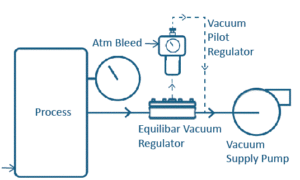 The EVR directly controls vacuum pressure
The EVR directly controls vacuum pressure 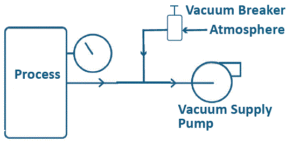 A vacuum breaker lets ambient air into the vacuum system to control the vacuum pressure
A vacuum breaker lets ambient air into the vacuum system to control the vacuum pressure
Equilibar Vacuum Control Products
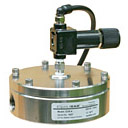 High Precision Vacuum Regulators
High Precision Vacuum Regulators1/4″ to 1″
0 – 30 inHg / 762 mm Hg
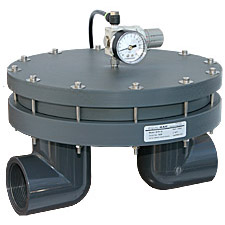 High Flow Vacuum Valves
High Flow Vacuum Valves1.5″ to 4″
0 – 30 inHg / 762 mm Hg
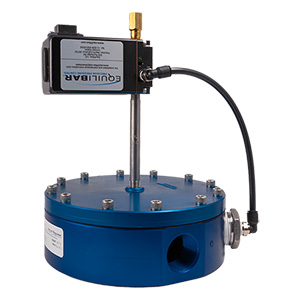 Electronic
ElectronicVacuum Regulators
1/4″ to 1″
0 – 30 in Hg / 762 mm Hg
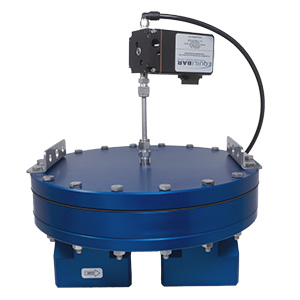 Larger Electronic
Larger ElectronicVacuum Valves
1.5″ to 4″
0 – 30 in Hg / 762 mm Hg
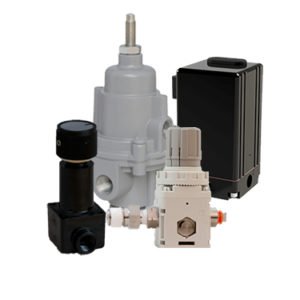 Vacuum
VacuumPilot Regulators
mechanical, electronic
and remote sensing
KEY PERFORMANCE ADVANTAGES
Dramatic Stability Improvement
The Equilibar EVR holds vacuum pressure stable across varying supply pressures. Traditional vacuum regulators are often sensitive to vacuum supply pressure, whereas Equilibar vacuum regulators effectively isolate upstream pressure from varying supply. The chart at right shows the excellent flow stability of the 1″ Equilibar® EVR.
Smooth Computer Automation
Equilibar vacuum regulators respond instantaneously to changes in vacuum supply or setpoint pressure. An electro-pneumatic vacuum pilot regulator can be combined with the EVR for smooth automated computer control.
Temperature and Chemical Compatibility
Equilibar vacuum regulators are available in 316SS, anodized aluminum or PVC, with O-rings and diaphragm materials to meet the needs of the most challenging vacuum environments. Certain designs can withstand process applications with ultrapure and aggressive chemical fumes and moisture. Options are also available for high temperature performance.
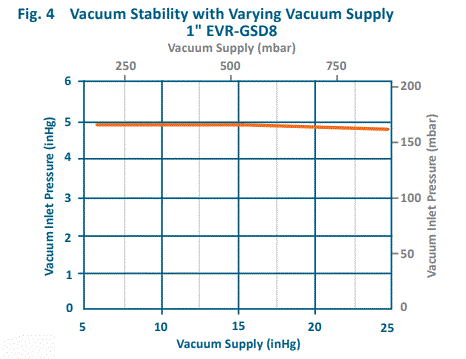
INSTALLING THE EQUILIBAR® EVR
To install an EVR, simply connect your vacuum supply pump or to the Outlet port. Connect the process that you want to control to the Inlet port. Ensure there is a small amount of gas bleed into the system. Start the system and adjust vacuum pilot regulator knob to achieve the desired vacuum level.
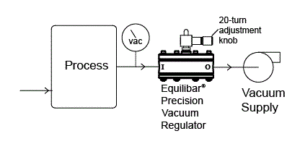
Video of Equilibar EVR
Watch how the EVR works and how it may be manually adjusted or electronically controlled.
Applications and Customer Case Studies
- Customer Case Study: Vacuum Packaging Food
- Blog: NASA uses EVR to vacuum bond thermal control elements to space craft
- Vacuum Table Control
- Precision Vacuum Distillation
- All vacuum Applications for EVR



